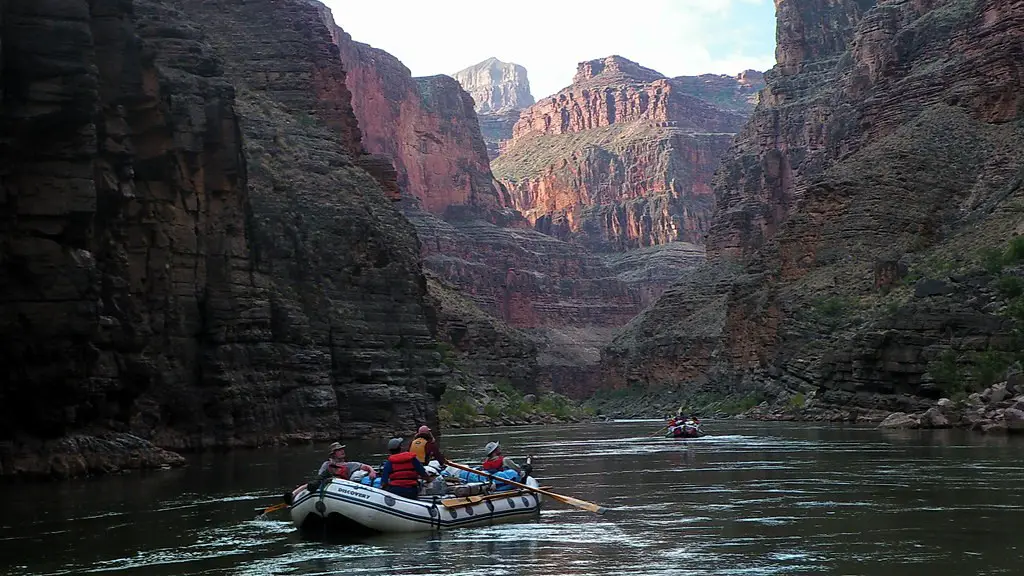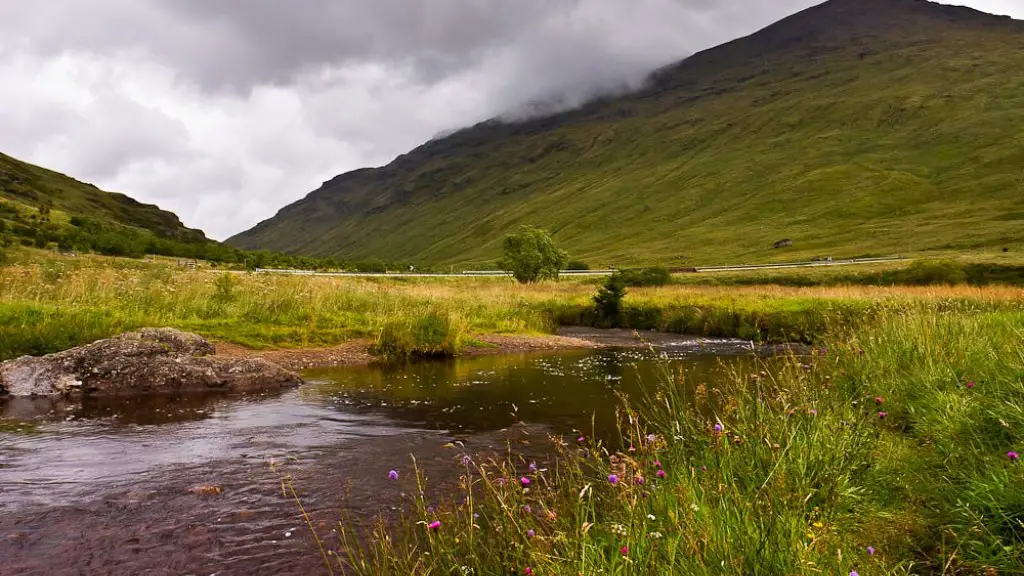The mighty Mississippi river, known for its vastness and beauty, is one of the world’s most important bodies of water. It has played a prominent role in American history for centuries. Flowing from northern Minnesota, the Mississippi reaches out across ten states in the US to the Gulf of Mexico.
The Mississippi River forms the border between Minnesota and Wisconsin. Further south, it is the border between Wisconsin and Iowa. It then continues to be the boundary between Iowa and Illinois. Further downriver, the states of Missouri and Kentucky lie on either side. The river continues to be the border between Tennessee and Arkansas, and forms part of the boundary between Arkansas and Mississippi. The Mississippi finally reaches the border of Louisiana at the Gulf of Mexico.
The Mississippi River is more than just the border between 10 states. It is an integral part of the lives of the people who live in these states. It is the lifeblood that pumps commercial goods and provides natural resources to its states. The fishermen in the Mississippi River bring in a substantial haul; it is not unusual to see a hauler full of catfish and other popular fish. There are also large tourist attractions like the many amazing views of the Mississippi and its beautiful sand beaches.
The Mississippi River is interwoven into the culture of the 10 states it connects. From the festivals and fairs that are celebrated along its length to the projects it allows in each state, the Mississippi River is an important economic and cultural hub. It attracts tourists as well as businesses looking to take advantage of the river’s resources.
Experts have long recognized the Mississippi River’s importance in connecting the 10 states. One of the most prominent examples of this is the development of the Mississippi River Trail (MRT). This 3,000 mile stretch of trails, campsites and points of interest connects all 10 states along the Mississippi River. The MRT has become popular amongst locals, tourists and outdoor enthusiasts, who enjoy the scenic views of the river, its tributaries, bluffs and wetlands.
The 10 states in the Mississippi River region have a shared history, economy and culture, and that connection is strong. The river is an important part of each state’s identity, and a major driving force of the region’s success. From Minnesota to Louisiana, the Mississippi River brings the 10 states together to create an incredible destination that is the envy of the world.
Impact on Geography and Climate
The 10 states along the Mississippi River have distinct geographic characteristics that give them their own identity. Minnesota is known for its lush evergreen forest, while Wisconsin is home to farmland and prairies. In Iowa and Missouri, you’ll find rolling hills and some of the most productive agricultural land in the US. The river’s banks are lined with bluffs and the Southern states are a mix of flat and hilly terrain.
The climate of the states along the Mississippi River is unique and diverse. Minnesota and Wisconsin experience cold winters, while Iowa, Missouri and Illinois have mild winters and hot summers. Further south, Louisiana and Mississippi are known for their humid subtropical climate and warm temperatures year-round.
The states along the Mississippi River are connected not only by the river, but also by the climate and geography that it influences. Experts have studied the impact of the Mississippi River on the geography and climate of the 10 states, and these studies have shown that the river plays a major role in shaping the landscape.
The changing landscape of the Mississippi River has long been studied by researchers, who have studied its impact on the environment. The river’s sedimentary deposits have created fertile soil that has allowed agriculture to flourish in the region. The river has also played a major role in creating the wetlands and other habitats that are home to a variety of wildlife.
The Mississippi River has also been studied by scientists to understand its effect on the climate. Studies have shown that the river has a large influence on temperature and precipitation patterns in the 10 states. It is believed that the river modifies the temperature of the states along its banks, which can cause them to be cooler or warmer than normal.
Economic Impact
The 10 states along the Mississippi River are economically intertwined. The river provides the states with an abundance of natural resources, such as timber and minerals, which can be used for economic growth. It has also played an important role in the development of industries such as farming, manufacturing and shipping.
The economic impact of the Mississippi River is far-reaching. In the 10 states, the river serves as an important transportation route, shipping goods to and from the states’ ports. This has helped the states’ economies to grow and become more interconnected. It has also increased trade between the states and the rest of the world.
The Mississippi River also plays a role in job creation in the 10 states. The river provides jobs in industries such as shipping, tourism, fishing and agriculture. These jobs provide a source of income for local residents and help stimulate economic growth.
The economic impact of the Mississippi River is not limited to the states it borders. It has been estimated that the river contributes $200 billion to the US gross domestic product each year. This makes the Mississippi River one of the most significant economic forces in the US.
The economic value of the Mississippi River goes far beyond the 10 states. The river is a major source of water for the US, and its tributaries provide drinking water to millions of people. It is also a source of hydroelectric power, providing renewable energy to power homes and businesses.
Environmental Impact
The Mississippi River has had an undeniable impact on the environment of the 10 states. In recent years, the river has been the focus of many environmental initiatives and efforts to protect the ecology of the region.
The main environmental impact of the Mississippi River is the erosion of its banks. This erosion has had drastic consequences for the landscape of the states along the river. In some cases, it has caused flooding and devastation to local communities, affecting the lives and livelihoods of those living in the region.
Scientists have studied the environmental impact of the Mississippi River on the 10 states. Studies have found that the river has caused dramatic changes to the local environment, including changes to the water quality of nearby streams and rivers. It has also been found that the river has affected the aquatic habitats of the region, affecting the populations of plants and animals that live in these areas.
In the past few decades, the 10 states along the Mississippi River have made significant efforts to curb the environmental impact of the river. These efforts have resulted in significant improvements to the water quality of the river and the surrounding environment.
The Mississippi River is an integral part of the lives of the 10 states that it connects. From providing a rich cultural and economic landscape to influencing the environment, the river has a unique and powerful influence that is undeniable and irreplaceable.





